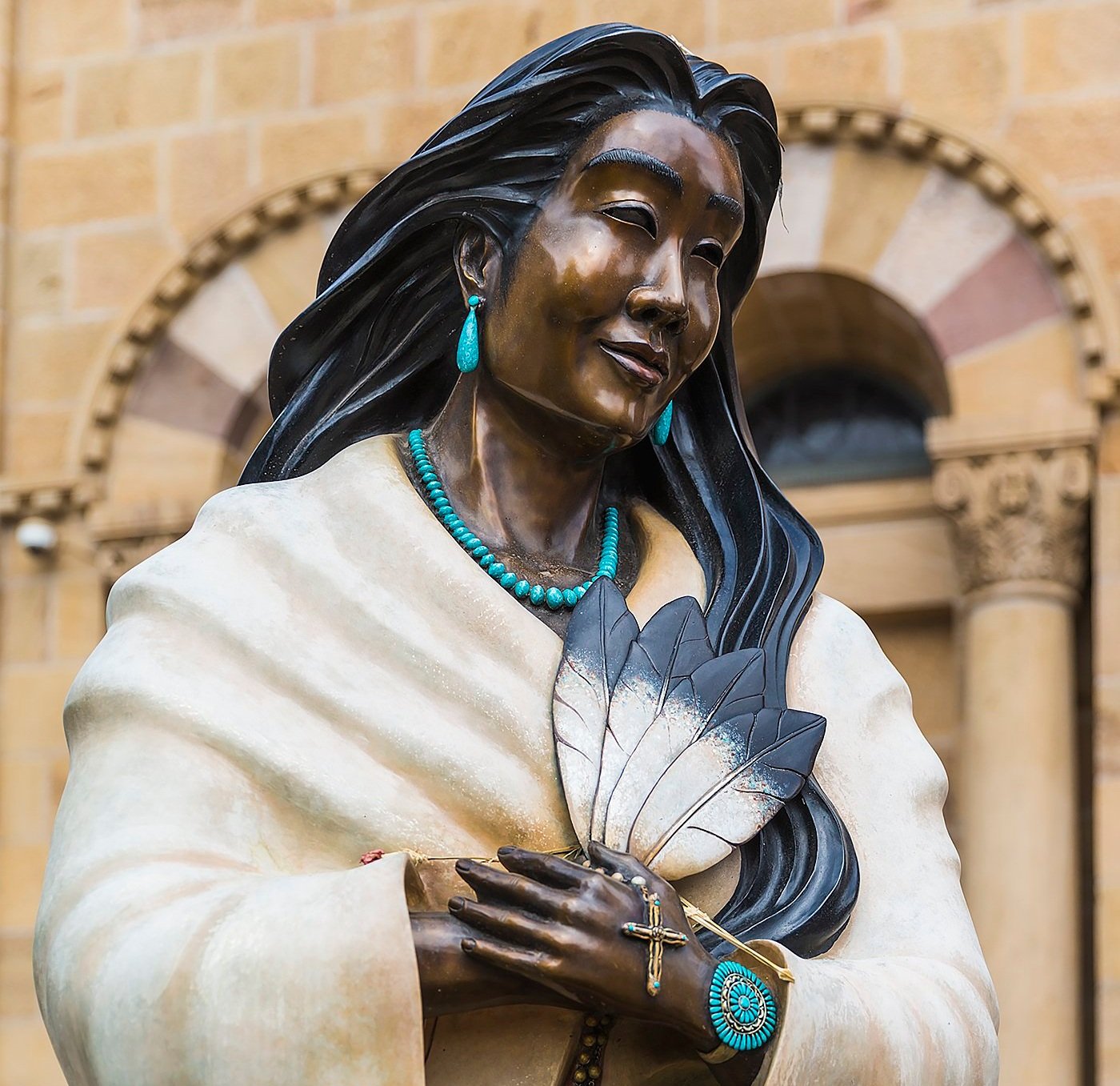Catholic and Indigenous
Theologian Jonathan Hamilton-Diabo, anthropologists Dr. Valentina Napolitano and Dr. Kristin Norget discuss reconciliation, Indigenous Peoples, and the Catholic Church
Statue of Kateri Tekakwitha (“Lily of the Mohawks”) at the Cathedral Basilica of St. Francis of Assisi, Santa Fe, New Mexico, 2015.
Born in the Mohawk village of Ossernenon, Auriesville, New York to an Algonquin mother and a Mohawk-chief father, St. Kateri Tekakwitha (1656-1680) is the first Native American to be recognized as a saint by the Catholic Church in the United States and in Canada. Photo: Dieterkaupp
Theologian Jonathan Hamilton-Diabo is Mohawk from Kahnawake, a First Nations community outside of Montreal, Canada. His research focuses on the history and impacts of Residential Schools, the Truth and Reconciliation Commission and the Calls to Actions; Indigenous interactions with Christianity and the Church; and building community relationships. He co-authored (with Tom Reynolds) the essay "Two Ears, One Mouth: Theological Education Towards Respect," published in A Quest for Respect: The Church and Indigenous Spirituality (Mennonite Church Canada, 2017).
In this episode of OP Talks, Hamilton-Diabo discusses reconciliation, Indigenous Peoples, and the Catholic Church with anthropologists Dr. Valentina Napolitano and Dr. Kristin Norget, co-authors of the article “Pope Francis, Reconciliation, and the State” (12 August 2022, FocaalBlog), featured on HTI Open Plaza as "Penitential Pilgrimage" (10 October 2022).
The road toward reconciliation is a long journey that will require working together, and there “is not one broad approach,” according to Hamilton-Diabo. “Some of these ideas around reconciliation is that there's an end goal and, really, what it is about is this idea of either establishing or reestablishing relationships—and, in some cases, reconciliation is not the right word,” he says. “It is conciliation for some communities and, for some people, they feel like, ‘We never had a good relationship to start off with, what are we trying to go back to?’ For some, it is actually this redevelopment."
Hamilton-Diabo also encourages us to really think about the nature of truth: “We talk about Truth and Reconciliation. There's a reason why they're put together. Truth is that whole understanding, that being able to take in some of the experiences and listening, and sometimes that gets missed. We just automatically say, ‘Let's just try to fix this.’”




